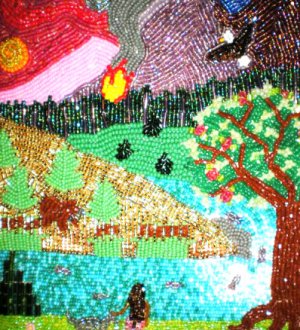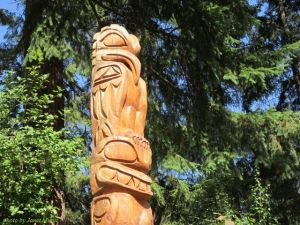LONGMONT, Colo., Oct. 9, 2013 — /PRNewswire-USNewswire/ — First Nations Development Institute (First Nations) today announced the selection of 23 American Indian and Alaska Native organizations to receive grants through its Native Youth and Culture Fund for the 2013-2014 funding cycle. The grants total $400,000.
The Native Youth and Culture Fund, underwritten by the Kalliopeia Foundation with other contributions from foundations and tribal, corporate and individual supporters, is part of First Nations’ effort to strengthen Native American nonprofit organizations, and is a key component of First Nations’ overall mission of revitalizing American Indian economies and communities. The fund was launched in 2002 by First Nations to partner with tribes, Native nonprofit organizations and Native community groups working in Indian communities with the intent to preserve, strengthen, and/or renew American Indian culture and tradition among tribal youth. Since 2002, through this program, 223 grants have been awarded to Native youth programs throughout the U.S., totaling $3.7 million.
The grants support the projects and provide capacity-building and training to the organizations’ staff members. First Nations believes Native youth are key to the future of Indian Country, and that youth-development efforts significantly enhance First Nations’ work to strengthen tribal economies. All of the funded projects demonstrate creative and innovative approaches, whether through traditional knowledge, art, language or a program or business enterprise.
The 2013 Native Youth and Culture Fund grantees are:
- Boys & Girls Club of the Northern Cheyenne Nation, Lame Deer, Montana, $15,000 – This project seeks to bridge the generational gap between tribal elders and youth by establishing a community garden that will encourage tribal elders to teach youth how to plant and harvest traditional foods using traditional Northern Cheyenne practices and teachings. This project is intended to help revitalize Northern Cheyenne culture and language.
- Cochiti Youth Experience, Cochiti Pueblo, New Mexico, $20,000 – This mentorship program pairs tribal elders with tribal youth to ensure that traditional pueblo farming methods are passed down from one generation to the next. The purpose of this project is to teach tribal youth the pueblo values of compassion, kindness, patience, and co-existence.
- Dakota Indian Foundation, Chamberlain, South Dakota, $20,000 – This summer camp is intended to teach 100 tribal youth from reservations throughout South Dakota about Dakotah culture and language. Tribal youth will participate in traditional rite-of-passage ceremonies as well as a commemorative horseback ride and other traditional activities.
- Euchee (Yuchi) Language Project, Inc., Sapulpa, Oklahoma, $20,000 – The purpose of this after-school program is to teach Euchee youth their traditional language and farming practices. After school, four tribal elders will teach 40 tribal youth the Euchee language as well as how to plant and harvest heirloom crops that they can use to host a traditional meal for the community.
- Friends of Akwesasne Freedom School, Roosevelt Town, New York, $18,000 – This language-immersion program seeks to revitalize the Mohawk language by introducing culture-based curriculum to both middle and high school students. In addition to learning the Mohawk language, students will also learn how to hunt, fish, trap and use traditional medicines.
- Grand Ronde Canoe Family, Grand Ronde, Oregon, $20,000 – This wellness program teaches high-risk tribal youth how to canoe. During the summer, 25 youth will paddle and train 20 hours per week, while also learning traditional Quinault songs and dances.
- Hawkeye Indian Cultural Center, Inc., Red Springs, North Carolina, $20,000 – This project seeks to preserve traditional Lumbee knowledge and language. Tribal youth will help preserve this knowledge by interviewing and recording tribal elders for the benefit of future generations. Additionally, tribal elders will share their knowledge and wisdom with tribal youth in a classroom setting.
- Hunkpati Investments, Fort Thompson, South Dakota, $15,875 – This program seeks to incorporate the Dakota culture into their existing programs, particularly their tribal youth programs such as their community garden project. They intend to teach 100 tribal youth how to plant and harvest traditional Dakota foods.
- Keres Children Learning Center, Cochiti Pueblo, New Mexico $15,875 – This language-immersion program seeks to revitalize the Keres language in a preschool setting serving children, ages 3-6.
- The Leadership Academy at Santa Fe Indian School, Santa Fe, New Mexico, $15,875 – This leadership program seeks to empower young women by teaching them to realize their value and build confidence and trust through hand-on projects. This project will serve young women, age 15-18.
- Lummi Youth Wellness Center, Bellingham, Washington, $20,000 – This wellness program seeks to establish a traditional healing garden in the Lummi community. The Lummi garden will be planted and harvested by tribal youth under the guidance and supervision of tribal elders.
- Menominee Indian Tribe of Wisconsin, Keshena, Wisconsin, $12,530 – This summer camp is designed to teach tribal youth about Menominee culture and language. Tribal youth will learn traditional stories, songs and ceremonies as well as participate in a drug and alcohol prevention program.
- Minnesota Indian Women’s Sexual Assault Coalition, St. Paul, Minnesota, $20,000 – The purpose of this program is to end sexual violence in Indian Country by teaching tribal youth traditional Native lifeways. Activities planned throughout the duration of this program include a powwow, arts and craft show, community garden and horse camp, among others.
- Miss Navajo Council Incorporated, Window Rock Arizona, $20,000 – This mentorship program seeks to pair former Miss Navajo winners with at-risk tribal youth to teach tribal youth leadership skills. In addition to strengthening leadership skills, this program will also help teach tribal youth traditional Diné values and practices.
- Native Women’s Society of the Great Plains, Timber Lake, South Dakota, $20,000 – This program seeks to revitalize a traditional Lakota /Dakota ceremony – the Isna Ti. The Isna Ti is a female rite of passage that instills young girls with the virtues and beliefs they need to succeed in life.
- Nez Perce Tribe, Lapwai, Idaho, $20,000 – This language-immersion program seeks to revitalize the Niimiipuu language with both after-school and weekend classes. Additionally, this program seeks to create electronic resources (i.e., computer software, visual and audio recording, etc.) to document these efforts and teach the language to future generations.
- The Notah Begay III Foundation, Inc., Santa Ana Pueblo, New Mexico, $20,000 – This program encourages tribal youth to celebrate their culture and become modern storytellers through the use of technology. Tribal youth under the guidance of tribal elders will record and relay health-related stories.
- Ogallala Commons, Nazareth, Texas, $6,000 – Support for high school, undergraduate and graduate internships for Native American students at non-profits in Colorado and New Mexico.
- Port Gamble S’Klallam Tribe, Kingston, Washington, $15,000 – This leadership program seeks to empower tribal youth through an experiential learning initiative. Tribal elders will lead tribal youth along guided tours across traditional lands and waterways. They will recount traditional stories and teach tribal youth traditional practices such as weaving, carving and harvesting.
- Quinault Indian Nation, Taholah, Washington, $20,000 – This program seeks funding to increase youth participation in the 2013 Annual Canoe Journey. Tribal youth will be directly involved in the local design, planning and hosting of the event. This program is intended to increase youth leadership and lay the groundwork for future youth programs in the Quinault community.
- Santo Domingo Pueblo, Santo Domingo Pueblo, NM, $15,875 – This language-immersion project seeks to actively engage tribal youth in traditional activities such as oral storytelling and dancing as well as traditional farming and cooking methods. The purpose of this project is to increase self-confidence and strengthen cultural identity.
- XKKF (Xaadas Kil Kuyaas Foundation), Hydaburg, Alaska, $10,000 – This apprenticeship program seeks to revitalize Haida culture and language with activities such as canoe-making and totem-pole carving. The purpose of this program is to preserve, strengthen and renew these traditions for future generations.
- The Zuni Youth Enrichment Project, Zuni, New Mexico, $19,970 – This program seeks to design and implement culture-based curriculum for Zuni students in the seventh grade. This program will focus upon cultural learning, academic success and leadership development.
The projects cover a variety of areas, including youth-elder intergenerational programs, cultivating responsibility and leadership, language programs, traditional foods and farming, wellness, history and cultural documentation.
Besides direct project funding, First Nations also will send a representative from each organization to the 18th Annual First Nations L.E.A.D. Institute Conference, which will be held October 3-4, 2013, at Mystic Lake Casino Hotel in Prior Lake, Minnesota. The conference is a key part of the L.E.A.D. Institute (Leadership and Entrepreneurial Apprenticeship Development program), and is an intensive learning, mentoring and networking event for emerging and existing leaders and staff members of Native nonprofits, and philanthropic professionals.
About First Nations Development Institute For more than 30 years, using a three-pronged strategy of educating grassroots practitioners, advocating for systemic change, and capitalizing Indian communities, First Nations has been working to restore Native American control and culturally-compatible stewardship of the assets they own – be they land, human potential, cultural heritage, or natural resources – and to establish new assets for ensuring the long-term vitality of Native American communities. First Nations serves Native American communities throughout the United States. For more information, visit www.firstnations.org.
PROGRAM CONTACT: Marsha Whiting, First Nations Senior Program Officer (303) 774-7836 or mwhiting@firstnations.org
MEDIA CONTACT: Randy Blauvelt, First Nations Senior Communications Officer (303) 774-7836 or rblauvelt@firstnations.org
SOURCE First Nations Development Institute
Read more here: http://www.sacbee.com/2013/10/09/5807603/first-nations-development-institute.html#storylink=cpy














